
A week of sunshine and fine weather can make a camping trip a truly fabulous holiday. The same for time spent caravanning or away in a motorhome. You will feel that you have truly had an outdoor break rather than trying to avoid wind and rain, cheer up grumpy children and wondering if you could just head home to sleep in your own bed.
Being outside can be good for the soul, a refreshing and entertaining way to live in a simpler way. One complication this summer has been the times of heat and even official heatwave conditions in parts of England.
Not to be put off, there are plenty of tips and hacks to cope with the heat of the day. An ideal pitch would have some shade but those are hard to come by. Also, shade when you arrive may disappear for the middle of the day.
When pitching your tent, take care that the vents are open. Make use of the fly nets to keep the tent aired and use the shade of the tent to store food and liquids out of the direct sun.
Nowadays, with modern lightweight fabrics, the air inside a tent can become intensely hot; it is no place to rest in the middle of the day. Nor to allow a dog to rest. Older style patrol tents and yurts that are made of heavyweight fabric are easier to air and provide better shelter from the midday sun.
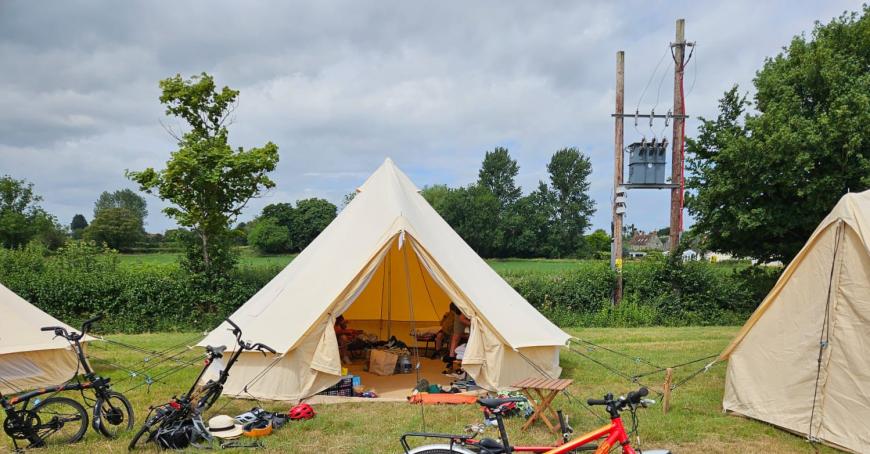
Some tents have a porch or small awning over the door, which can also provide shade so it is worth considering how the sun will move during the day. The sun rises in the east and sets in the west, with the southerly aspect being most exposed during the day. Of course, the top of the tent or the van will be under the glare of the sun all day long.
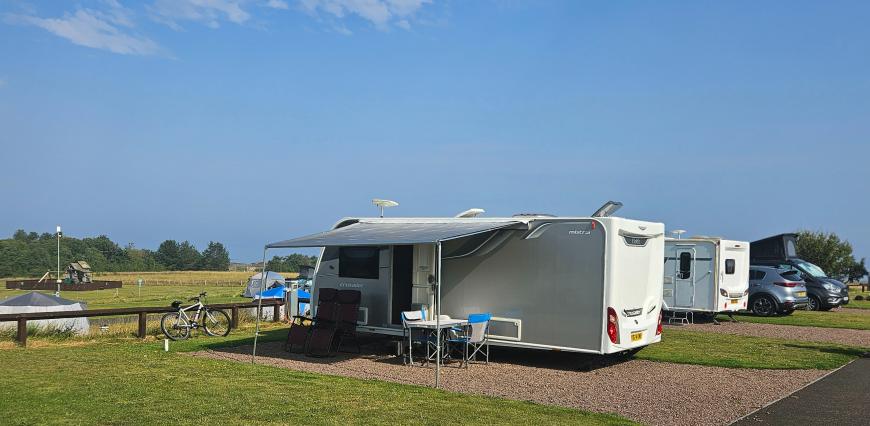
In a caravan or a motorhome, an awning on the sunniest side should offer some protection through the day. Like in homes, it is good practice to close the blinds and open some vents. Also, protecting the windscreen with a cover, especially one with a silver reflective outer covering.
In caravans, it is good practice to leave a gap when pulling down the blinds so that the air between the blind and the window does not become very hot, it can affect the fittings. Air flow is important rather than stagnant air being continuously heated. Don’t leave aerosols inside a hot tent, a hot car or caravan and check what your teenagers have brought along.
A portable air conditioning unit is an option, as are portable fans. Hot air rises, and the ceiling skylights can offer an escape. A breeze from one window to another, or using a fan to draw in hopefully cooler air and draw out from a higher vent.
As part of outdoor living, cooking outside is recommended. By not cooking inside, there is less additional heating to the living and sleeping areas. It is also worth turning off any electrical appliances inside the van, such as a water heater.
Often, the only sleeping bags in British households are three-season ones from Guide or Scout camp, or a school trip. You might have spent time looking at the warmth rating and if a sleeping bag was going to keep you cosy at +2C rather than thinking about a lightweight summer bag. They can be more comfortable.
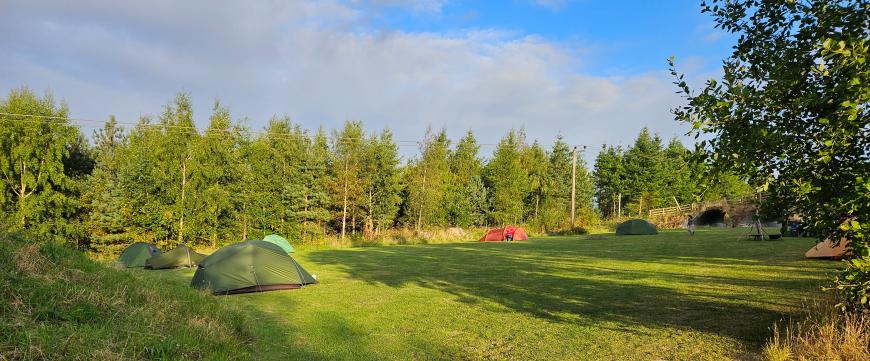
What about food?
There can be choices about a cool box with icepacks or a gas-powered fridge. Even a bucket of water with a tea towel over a bottle of white wine or milk. You should move the bucket to keep up with the shifting shade and refresh the water so that it remains cool. Some sites offer a freezing service for ice packs so it might be worth taking a double set.
Taking frozen food works well to survive the journey and to keep the cool box cool and other foods. Freezing your meals for day 2 and 3 can work well. An old-fashioned solution is a hanging larder, often of three flat square shelves joined by rope with netting encasing the structure. You would hang this in a tree for shade and was a safe larder, as long as you remembered that you stashed provisions in it. Even a string bag with fruit in it can achieve the same results.
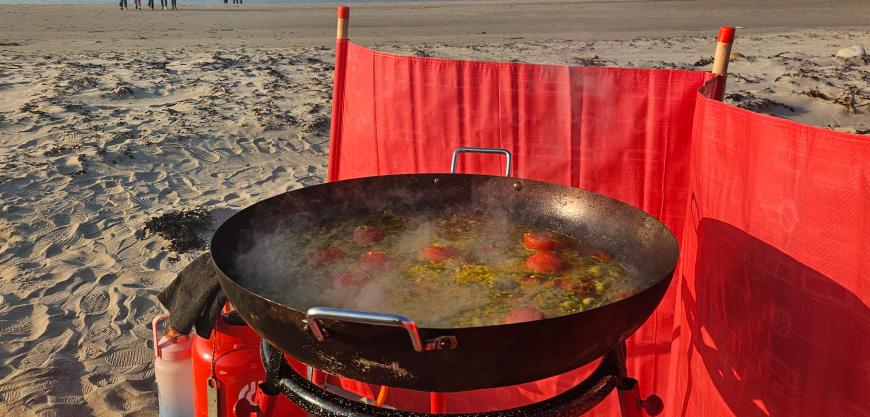
When you are cooking outside, do be aware of the current fire risk. Most campsites have set rules about fires and barbecues.
It is worth keeping a jug of water or squash to hand throughout the day so that it is easy to keep hydrated and to remind yourself. Also filled water bottles for all to keep your pee clear and help avoid heat exhaustion or worse, heatstroke. Remembering to wear a hat and slap on the sunscreen also helps. Look after dogs, it might be worth bringing something that will work as a shade for pets for your trip.
And do keep an eye on the forecast. It might be that early low cloud creeps in overnight from the coast but will soon disappear during the day. A shift in the wind direction might change how the day, or evening feels. Of greater concern is the risk of thunderstorms. Watch out for the convective forecasts when a green bar appears at the top of the home page on the Netweather website, “Thunderstorms Expected - Storm Forecast Issued”.
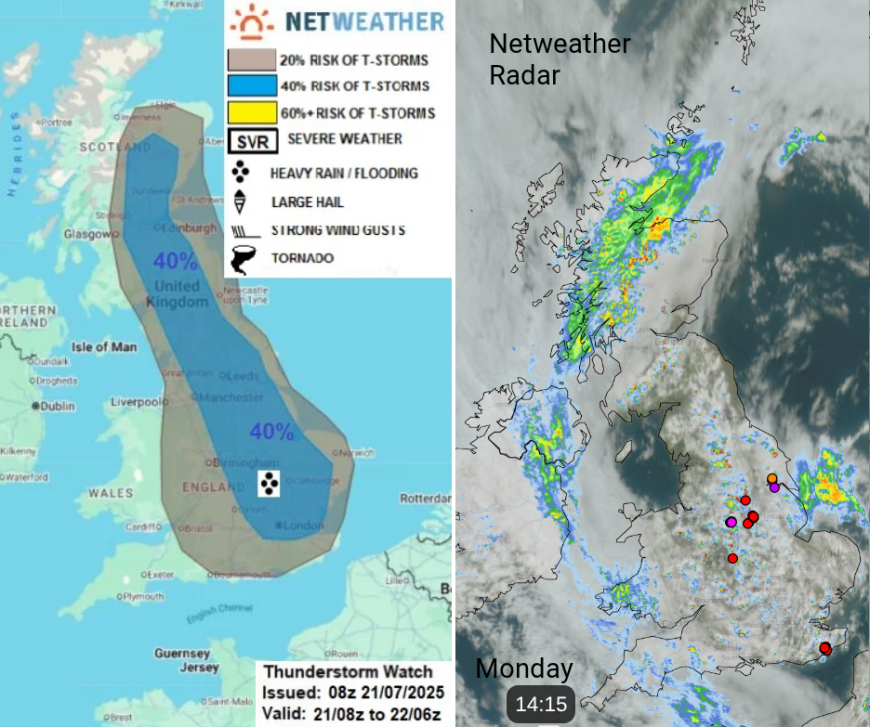
Also, the Met Office thunderstorm warnings and keeping an eye on the Netweather Radar, with lightning ON to see the strikes as they appear. Often, thunderstorms are well scattered within a warned area so many places miss them. However, summer thunderstorms can bring sudden torrential downpours, resulting in flash flooding.
One thing when camping or caravanning in the heat is to just slow down and enjoy a gentler pace of life.
Loading recent activity...